
Location:
Richmond River Light, also known as Ballina Head Light and Ballina Light, is an active lighthouse located at Ballina Head, a headland to the east of Ballina on the New South Wales far north coast. The headland is on the northern side of the entrance to the Richmond River.
Summary:
GPS: Lat: 28° 52’ S : Long: 153° 36’ E
First Lit: 1880 (Automated 1920)
Tower height: 7 m, Elevation 35 m
Original Lens: 4th Order catadioptric Replaced by 2nd Order Chance Bros. Fresnel (Current)
Range: White 14 nml
Current Characteristic: Four white flashes every 16 seconds [Fl W(4) 16s]
History:
Indigenous:
The Ballina area is the traditional land of the Bundjalung people, specifically the Nyangbal clan. The area around the Richmond River mouth was an important meeting place and food gathering site for Indigenous peoples, with the river and surrounding waters providing abundant fish and shellfish. The headland where the lighthouse stands was used as a lookout point and had spiritual significance in Indigenous culture.
Colonial:
The Richmond River was discovered by Captain Henry John Rous in 1828 and named after the 5th Duke of Richmond. The river quickly became important for the cedar-getting industry, leading to European settlement in the area. By the 1840s, ships regularly entered the river to transport cedar and later agricultural produce.
Early maritime activity was hazardous due to the shifting sandbar at the rivermouth and the lack of navigation aids. Several shipwrecks in the 1860s and 1870s highlighted the need for a lighthouse.

Indigenous:
The Ballina area is the traditional land of the Bundjalung people, specifically the Nyangbal clan. The area around the Richmond River mouth was an important meeting place and food gathering site for Indigenous peoples, with the river and surrounding waters providing abundant fish and shellfish. The headland where the lighthouse stands was used as a lookout point and had spiritual significance in Indigenous culture.
Colonial:
The Richmond River was discovered by Captain Henry John Rous in 1828 and named after the 5th Duke of Richmond. The river quickly became important for the cedar-getting industry, leading to European settlement in the area. By the 1840s, ships regularly entered the river to transport cedar and later agricultural produce.
Early maritime activity was hazardous due to the shifting sandbar at the river entrance and the lack of navigation aids. Several shipwrecks in the 1860s and 1870s highlighted the need for a lighthouse. The first navigation aid was a timber tower erected in 1866, but this proved inadequate for the growing maritime traffic.
The Lighthouse:
A temporary light was first established in 1866 to guide ships into the river with vessels stopping at Ballina or continuing up river to unload and load passengers and cargo at the river port. This light also served as a leading light into the river, together with a steamer’s masthead lantern that was located 30 metres toward the river and worked in tandem with the lead light.
Tenders were called for construction of the 17ft circular stone tower and keepers cottage in 1878, it was built in 1879 and exhibited in 1880. The location of the light allowed construction of a short tower while still achieving a focal plane height of 115 feet.
The current Richmond River Light was designed by James Barnet, the Colonial Architect of New South Wales, as part of his systematic approach to lighthouse design along the NSW coast. The lighthouse was constructed in 1892 to replace the original timber structure.

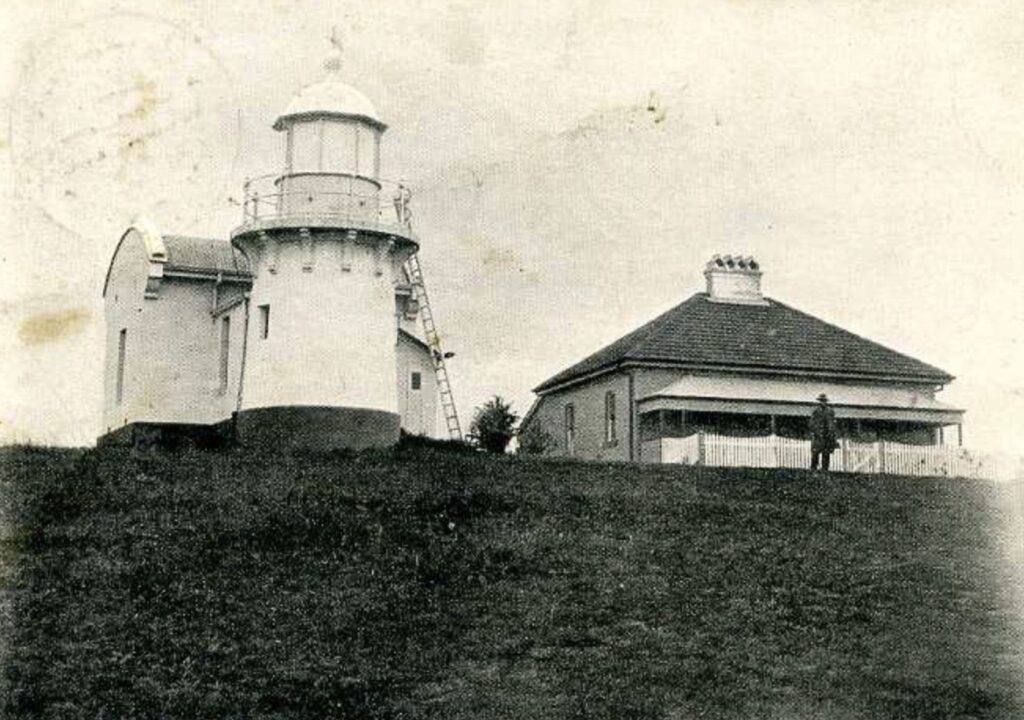
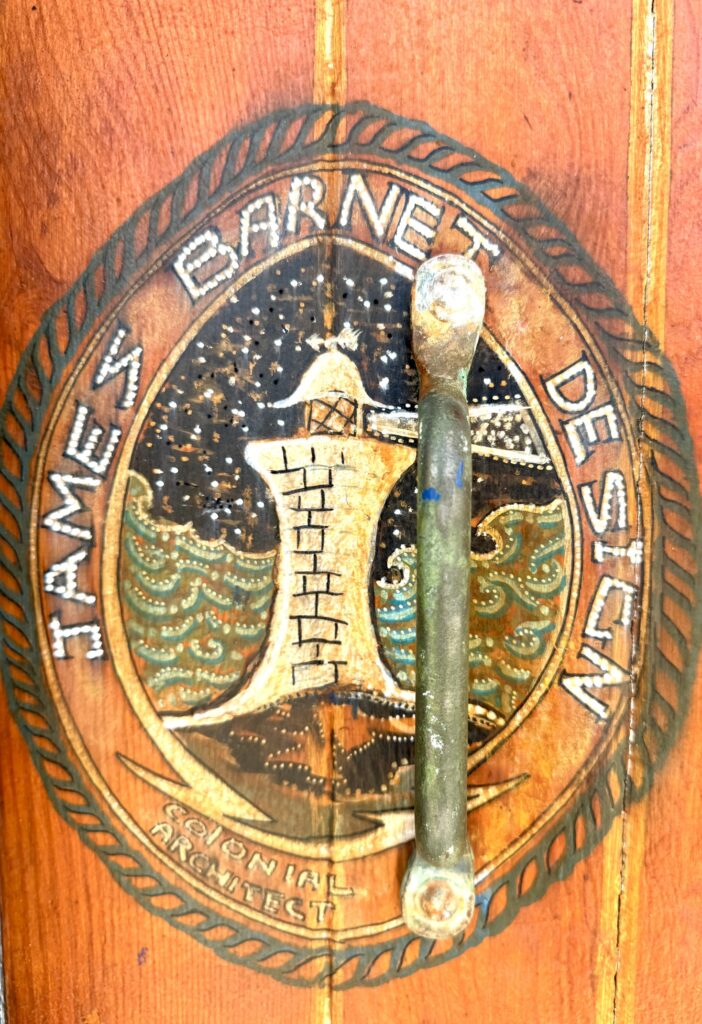
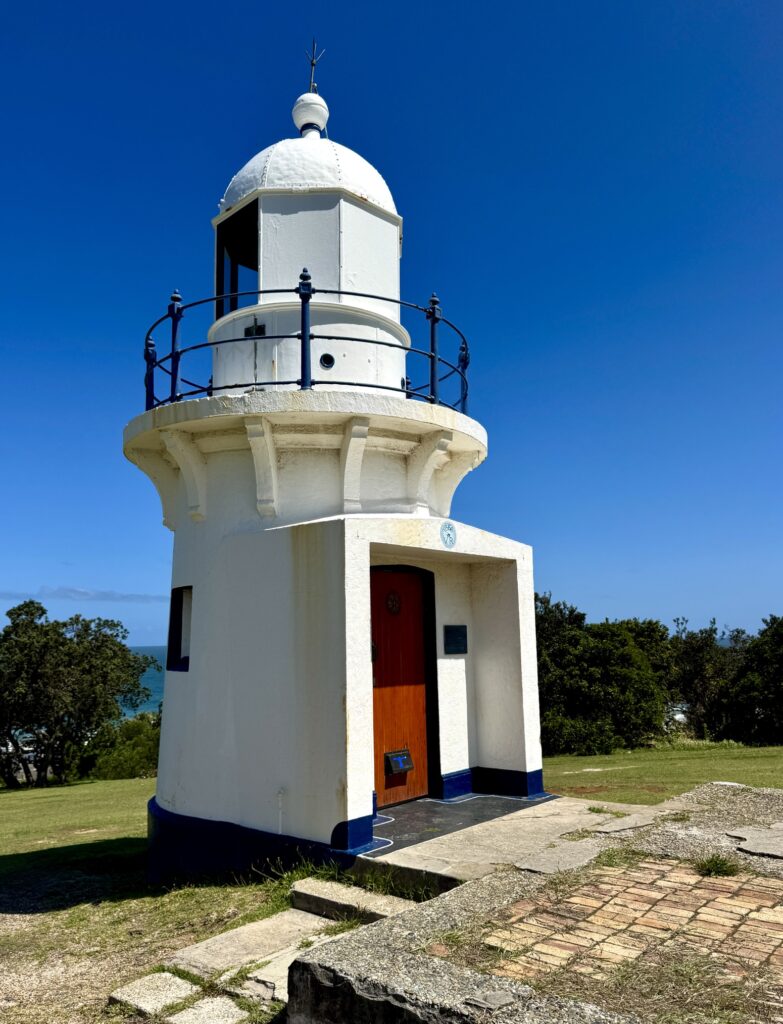
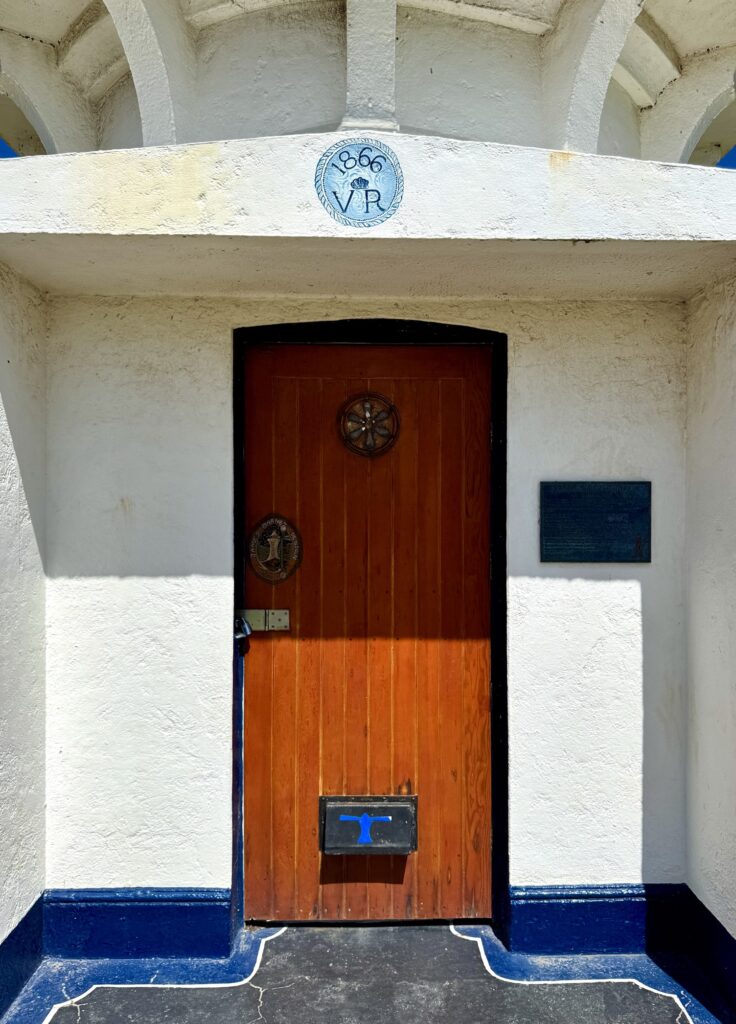
The current lighthouse is one of five lighthouses of similar design designed and built by James Barnet in 1878–80, the other four being Fingal Head Light, Old Clarence River Light, Tacking Point Lighthouse and Crowdy Head Light.
The Structure:
The lighthouse is built of brick and rendered with cement, painted white. Its design is typical of Barnet’s smaller coastal lights, featuring a cylindrical tower with a gallery and lantern room. The tower has a decorative bracketed cornice below the gallery level. The platform can be reached by an iron stair inside the tower. Around the perimeter of the platform is a metal handrail. The platform is topped by the simple metal dome which houses the optical apparatus. Originally the lighthouse had a porch, rectangular annexe for the duty room and oil store. These were all demolished in November 1940.
The lighthouse is shorter than many of its contemporaries due to its elevated position on the headland.
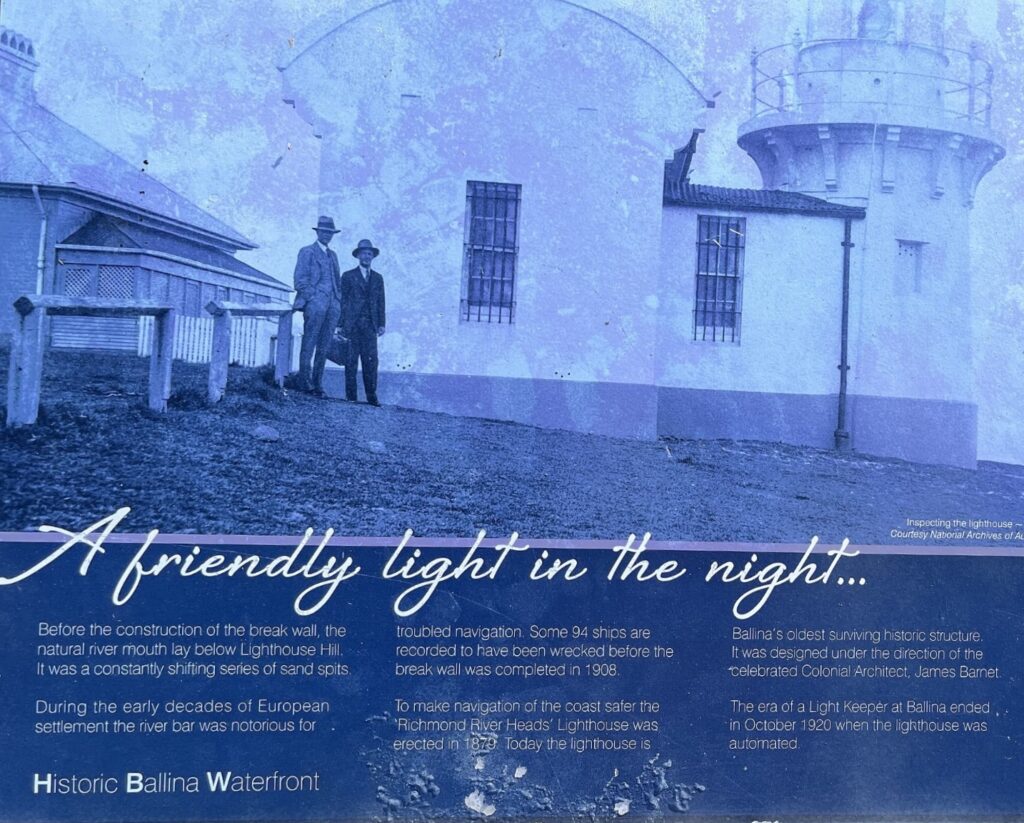

Technical Details:
The first apparatus was a Chance Bros fixed 4th order catadioptric light of approximately 1000 candelas was state-of-the-art for its time and visible for twelve miles in clear weather.
A 6th order light was raised on a wooden structure 33 yards from this light to act as a leading light for vessels entering the Richmond River.
A two wick oil burner provided the light source up until conversion to automatic acetylene gas operation in 1920 This allowed the removal of the keeper. Gas remained the illuminant until conversion to mains electricity operation in the 1960s.
On 15 June 1920 the light was converted to an automatic carbide lamp (acetylene gas) apparatus, with an intensity of 1,500 cd, and altered to group flashing. Soon after, the station was demanned and all buildings other than the tower were demolished.
In 1980 the light was converted to electricity. The current light source is a modern FA-251 Beacon with a 12 Volt 75 Watt HL-2000 quartz halogen lamp. It is fed by mains electricity with a battery standby. It revolves once every 30 seconds.
The current light characteristic is a flash every five seconds, red to east and white to other directions (Fl.W.R. 5s). It is partially obscured.
The light source was initially kerosene-powered. The lighthouse was electrified in 1960, and an electric lamp replaced the kerosene burner. The original lens remains in service today
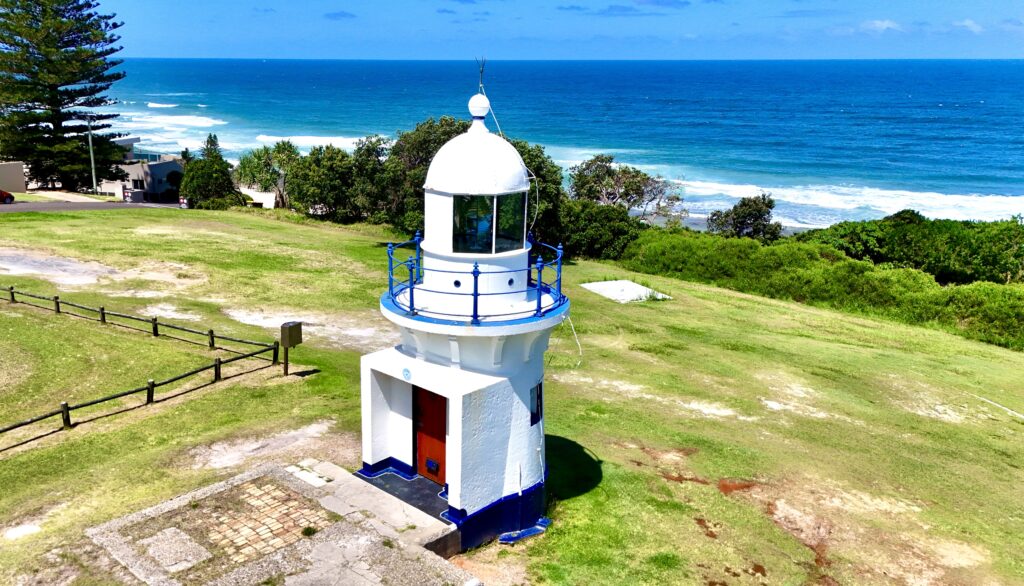

Keepers of the Light:
The lighthouse was initially operated by a head keeper and an assistant keeper. In later years the light was run in conjunction with the pilot station and therefore only needed one keeper.
Notable keepers included:
- John O’Flynn (1879-1882) – First keeper of the original timber tower
- William Smith (1892-1902) – First keeper of the current tower
The lighthouse was automated in 1965, ending the era of resident keepers.
Shipwrecks & Tragedies:
The Richmond River entrance was notoriously dangerous due to its shifting sandbar. Notable wrecks include:
- Culloden (1872)
- Waimea (1872)
- Francis Hixson (1883)
- Prosperity (1884) – Wrecked attempting to cross the bar
- SS Wherrett (1898) – Lost on the bar
- Lady Musgrave (1904) – Ran aground on the south breakwater wall
- SS Tomki (1907) – Washed ashore on Lighthouse Beach after failing to negotiate the Ballina bar

These incidents highlighted the importance of the lighthouse in maritime safety.
Myths & Mysteries:
Local folklore includes stories of mysterious lights seen from the lighthouse during stormy nights, attributed by some to the spirits of lost sailors. Some keepers reported unexplained sounds in the tower during their watches.
Interesting Facts:
The Richmond River Light was one of the last lighthouses designed by James Barnet before his retirement. It remains an important example of late 19th-century maritime infrastructure and represents the development of coastal navigation in colonial New South Wales.
Current Status:
The lighthouse remains an active aid to navigation, maintained by the Australian Maritime Safety Authority. The site is accessible to the public and offers panoramic views of the coastline and river entrance. The lighthouse and its surroundings are managed by Ballina Shire Council and form part of a popular coastal walking track.